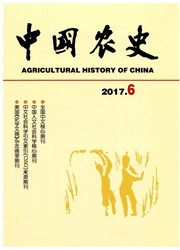

 中文摘要:
中文摘要:
20世纪50年代前期,乡村手工业是农民经济活动的重要组成部分,在国民经济中占有一定的比重。在生产力不发达的情况下,乡村手工业的发展对于解决农民的生产生活困难,加强城乡的物资交流,活跃市场也发挥了不可或缺的作用。乡村手工业具有生产分散、资金有限、规模狭小、季节性强、依附于农业等特点,随着社会主义改造的进行.乡村手工业的从业人数和产值逐步下降。
 英文摘要:
英文摘要:
Handicraft industry in rural areas played an important role in the farmers, economic activities, and occupied a certain proportion in the national economy. Due to underdevelopment of productive forces, the development of handicraft industry in rural areas took an essential role in the solution for the production and life difficult of peasants, the exchange of goods, and the promotion of the market activities. The development of handicraft industry at that time featured scattered production, shortage of capital, seasonal operations and heavy dependence on agricultural. With the progress of the socialist transformation, the output and the umber of employees in handicraft industry in rural areas gradually declined.
 同期刊论文项目
同期刊论文项目
 同项目期刊论文
同项目期刊论文
 期刊信息
期刊信息
